Whatley Manor is built on the grounds of what was originally an 18th century farm estate. The 12-acre estate became a hotel in 2003, and its kitchen gained two Michelin stars under former chef Martin Burge, which the restaurant kept from 2009 to 2017. Niall Keating took over the kitchens from Mr Burge in December 2016. Niall started his career at Michelin-starred The Bath Priory hotel, where he rose to the rank of sous chef. He then worked at Sat Bains for two years, had a year at Benu and in 2016 moved to Kong Hans Kaelder in Copenhagen as chef de cuisine. This is the restaurant where I first tasted his food. With Niall leading the kitchen, Whatley Manor was awarded initially one Michelin star, and regained a second star in the 2020 guide. At dinner around 40 guests can be seated, split over several small dining rooms. There was a no-choice tasting menu at £130, though allergies etc can be accommodated – for example a full pescatarian menu was available.
The wine list had 206 full-sized bottles, ranging in price from £29 to £1,000, with a median price of £91 and an average mark-up of 3.3 times retail, which would be quite painful in Mayfair, never mind Malmesbury. The list had very wide geographic coverage, with bottles from as far afield as Armenia, Israel, Uruguay, Wales and China, and only 41% of the list is from France, so some imagination was used when putting it together. Examples were Sauvignon Blanc 'L5' Yealands Estate 2018 at £42 for a bottle that you can find in the high street for £14, Tytherton Red 2016 from Maud Heath at £62 compared to its retail price of £?20, and the excellent Rioja Viña Tondonia Reserva Bodegas Lopez de Heredia 2007 at £99 for a label that will set you back £49 in a shop. At the prestige end of the list, Barolo Nebbiolo Le Vigne 2008 from Luciano Sandrone was £275 compared to its retail price of £135, and Saint-Emilion Château Angélus 1995 was £900 for a wine that has a current market value of £371. One relative bargain was Domaine Arnaud Ente’s basic Bourgogne Blanc 2013, which despite its humble status now fetches £178 a bottle in a shop due to its highly fashionable grower. The retail price of this wine is actually more than the list price here of £130. As an alternative to the list, corkage was £40 a bottle.
You begin your meal in the spacious lounge with a selection of canapés. Charcuterie made in house was very pleasant, capicola ham made from the neck of the pig, accompanied by aged carrot that had been cooked in sake and soy and then dried, producing a fudge-like texture. This was topped with daikon radish and caviar. The best of the canapés was a delicate rice cracker with a little olive oil and mayonnaise, which worked nicely. These were pleasant rather than remarkable nibbles (15/20). We moved into the dining room for the main meal, which was a tasting menu that unfolded over ten small courses. The dining room is split into several small sections, with tables amply spaced and a low ceiling. An eclectic set of music played quietly in the background. The first course to be served here was a little piece of sweet and sour eel garnished with citrus and embedded in a tempura cracker, as well as a piece of chicken wing marinated in a mix of Asian ingredients including soy, described as “treasure chicken”. This was very nice if a touch salty even to my taste, but the eel dish suffered from a rather greasy cracker, although the eel itself had good flavour (14/20).
Next was smoked cream tofu (soymilk curds), mixed in with marinated salmon trout roe and citrus. The trout roe was marinated in mirin, soy, sake, bonito flakes and vinegar, and mixed with pieces of the fish itself. This was the kind of dish that you might encounter in a kaiseki restaurant in Kyoto, and worked very well. The tofu had good texture, the acidity of the citrus nicely cutting through the natural oiliness of the fish (comfortably 16/20). At this stage bread made an appearance, sourdough that was made from scratch and had very light texture, with a crispy outside and aerated inside (17/20).
The next dish was an unusual “risotto” of diced raw Orkney scallops and chorizo vinaigrette along with raw spring onion, dried scallop roe and rice puffs. The rice was Japanese short grain koshihikari rice rather than a traditional Italian risotto rice like the medium grained carnaroli. The rice was finished with crème fraiche and Parmesan flavoured with spice, and although quite unusual the blend of flavours was very enjoyable (16/20). This was followed by tortellini coloured by squid ink, filled with minced pork belly and chicken, ginger, spring onion and a little foie gras. It was garnished with spring onion, pork jus and black garlic oil, with a lardo garnish. This worked very well, the pasta having good texture, the filling having plenty of flavour (16/20).
Halibut seared on one side came with a foam of butter with yuzu koshō, a Japanese condiment involving chilli and citrus. The fish was garnished with marigold leaves, compressed cucumber, aloe vera gel and pearl onion leaves. Alongside was some rather bland mashed potato that for me would have benefited from more salt. I quite liked the raw onion garnish but otherwise the flavours seemed a touch underpowered, though the halibut was accurately cooked. It is a fish that I can never get really excited about in the way that I can about wild sea bass or turbot, but it was certainly very pleasant (15/20).
The final savoury course was grilled sirloin of grass-fed Aberdeen Angus beef that had actually been raised in the grounds of Whatley Manor, so about as local as it is possible to get. This came with a Korean ssamjang sauce (a spicy paste), charred onion puree and both kimchi and nashi pear and yuzu salad on the side. The kimchi was made from scratch using Chinese cabbage fermented with oysters, spring onion, chilli flakes, daikon and pear.
The beef had good flavour, the kimchi being a lot more restrained in its sourness than you would encounter in a kimchi in Seoul, or even in New Malden (which is the largest Korean community in Europe). Again, this dish was very enjoyable, the gentle spices nicely lifting the flavour of the beef. Once more, for me the flavours could have been stronger, as usually Korean spicy sauces are bold and vibrant rather than restrained (16/20).
An initial dessert was a pretty dish of chocolate with buttermilk ice cream with chamomile. The chamomile itself was subtle to the point of invisibility but the chocolate itself was very good, baked then frozen and defrosted, and having silky texture (16/20). This was followed by sheep yoghurt with sansho pepper ice cream, infused with coconut puree, ginger, lemongrass and lime leaf. There was also a ginger and sansho pepper crumb to add a contrasting texture. Sansho is a Japanese pepper related to Sichuan pepper, and I was expecting to taste some of its characteristic numbing spice, but it was hard to detect, though the ginger livened it up a little (15/20). The final dessert was a chocolate frog filled with lemon cream and notionally with eucalyptus, though this usually dominant flavour seemed missing in action, though that may not be a bad thing as it left the lemon and chocolate to speak for themselves (16/20). Perhaps this dish is inspired by the chocolate frog petit four served at Arzak in San Sebastian.
Coffee was a range from Difference Coffee, and I enjoyed their excellent Brasilia Yellow Bourbon as a double espresso. Grander speciality coffees such as Panama gesha were also available. Service was very good throughout, the staff attentive and the drinks topping up flawless. The bill tonight came to £178 person before service, with the food element being £130. If you shared a modest bottle of wine and had coffee then a typical cost per person might come to around £160.
The meal certainly had a considerable Asian influence, and it rather reminded me of the cooking of Tim Raue in Berlin, though in this this case the Asian flavours were more restrained. The tofu with roe was an out and out Japanese dish. That is fine, but immediately draws comparison with the kitchens of Japan, in which for example the somewhat greasy eel cracker earlier would never have passed muster. Clearly the overall technical skill in the kitchen was considerable, ingredients were good quality if not ultra-luxurious and the meal was certainly enjoyable, but it did leave me wondering what might have been if the flavours had been amped up a notch; perhaps they are being held back to cater for what is perceived to be local taste, but I would prefer to see more vibrant flavours.
We were staying for two nights, and were served an entirely different menu on the second night. This tasting menu was a little shorter and quite different in style, being much more classical French. A different canape from the previous night was tapioca that was cooked and mixed with dried yeast before being de-hydrated into a cracker, topped with elderflower mayonnaise and lemon verbena gel. The cracker had very light texture and the gentle hint of acidity from the lemon worked nicely with the mayonnaise.
A buttermilk waffle topped with beef sirloin tartare and yuzu oil was the first course tonight, garnished with oyster mayonnaise and Royal Beluski caviar from the supplier Exmoor Caviar. This is a hybrid caviar from two sturgeon species that are native to the Amur river in China (Huso Dauricus and Acipenser Schrenckii). The waffle had lovely texture and worked well with the rich beef and caviar. For me the beef tartare could have had slightly bolder seasoning, but the dish worked very well, the briny caviar combining nicely with the beef (17/20). This was served with ribbons of salted butter that was dusted in yeast and leek ash.
Next was turbot, the 4kg fish being presented before cooking in a fish kettle with shallots, garlic and Gusborn sparkling wine. The fish had excellent flavour and the cooking was accurate, the turbot served with a creamy beurre blanc sauce with enoki, shimeji and king oyster mushrooms, chopped chives and parsley. There was a pleasing touch of vinegar in the sauce that cut nicely through the richness, and the thyme added another nice flavour element. On the side, the turbot cheek and fins were served in more of the cooking liquor (17/20).
My main course was Cotswold Gold chicken “en vessie”, the bird stuffed with summer truffles and cooked in a pig bladder that is carved open at the table. This technique requires patience, taking over an hour of basting, the chicken then served with a vin jaune sauce, shallots, tarragon, chives and edamame beans. On the side was silky mash with a generous topping of summer truffle. The chicken had very good flavour and was precisely cooked, the sauce lovely and the beans a good contrast to the rich sauce, with the summer truffle mash a nice accompaniment (18/20). It would be intriguing to see this dish made with an even higher quality bird, such as a chicken from the Landes or Bresse.
Pineapple carpaccio was the pre-dessert, the fruit poached in saffron, coriander seeds, pink peppercorn and star anise before being thinly sliced. It was accompanied by pineapple and lime sorbet and a yuzu extra virgin olive oil jelly, achieving a refreshing overall effect (15/20). The main dessert was a pleasingly rich chocolate tart using chocolate cremeux, chocolate and almond soil and a white chocolate mousse to go on top. This dessert had very good texture (16/20). There was also a mignardise of millefeuille of peppercorns, which was pleasant and was a good foil for the coffee.
The meal tonight was very different from the one the previous evening, far more classical in style. Although the kitchen can clearly cook very well in either style, the classical dishes tonight felt more assured to me. It was not merely that I have a preference for classical dishes; I just felt that for example the chicken was a higher quality dish than anything on the previous tasting menu. It will be interesting to see how the chef’s style develops in the future, as there is clearly quite a range of skills in the kitchen.
Service was again very good, and the second dinner came to £187 per person including drinks before service, with the menu element being £130 once again. This is hardly cheap, but overall Whatley Manor has a lot to offer a visitor, with its beautiful setting, skilful service and very capable cooking.
Further reviews: 21st Sep 2015 | 24th Apr 2010





























































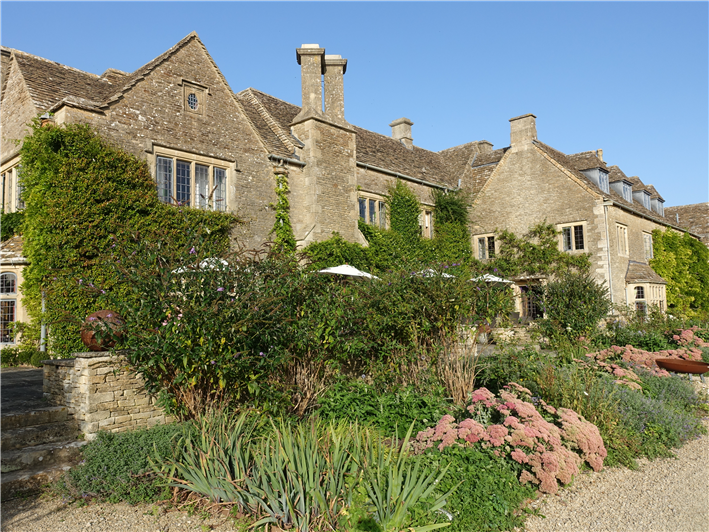
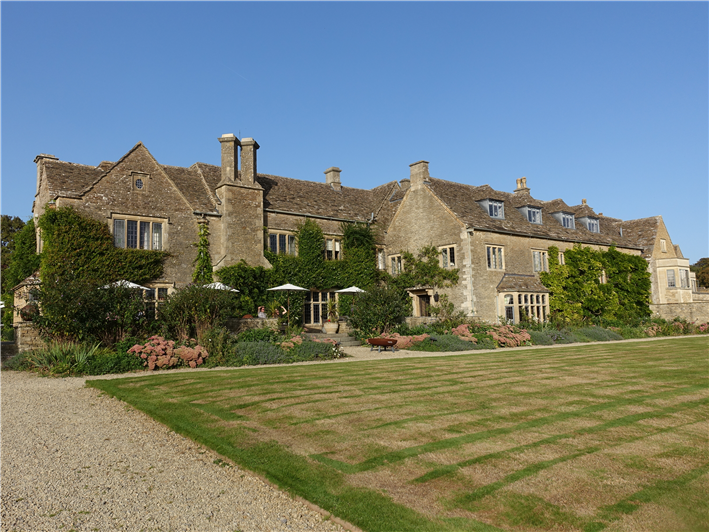

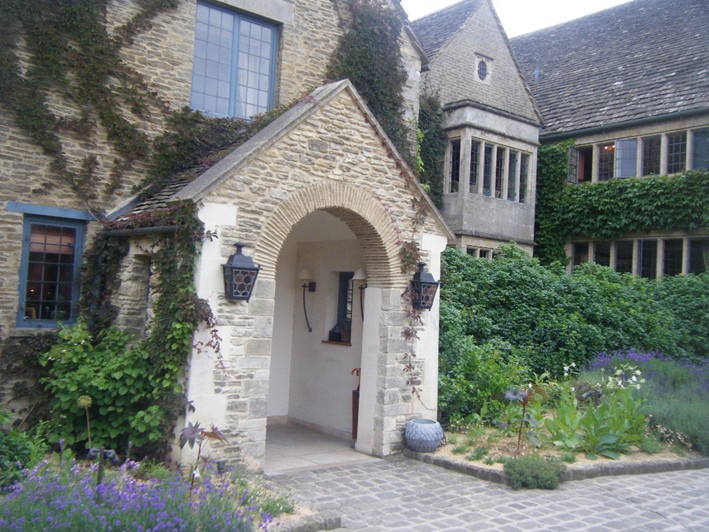
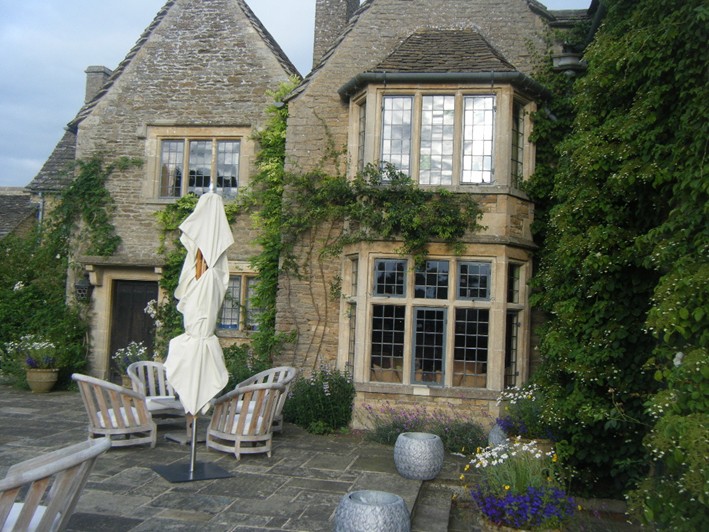
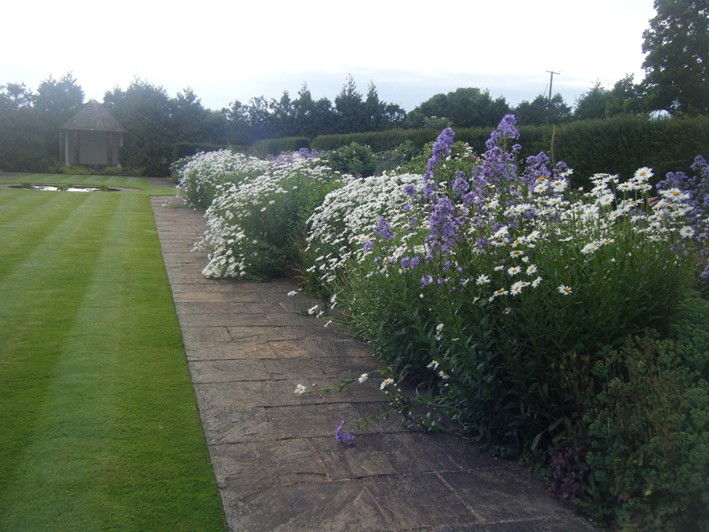

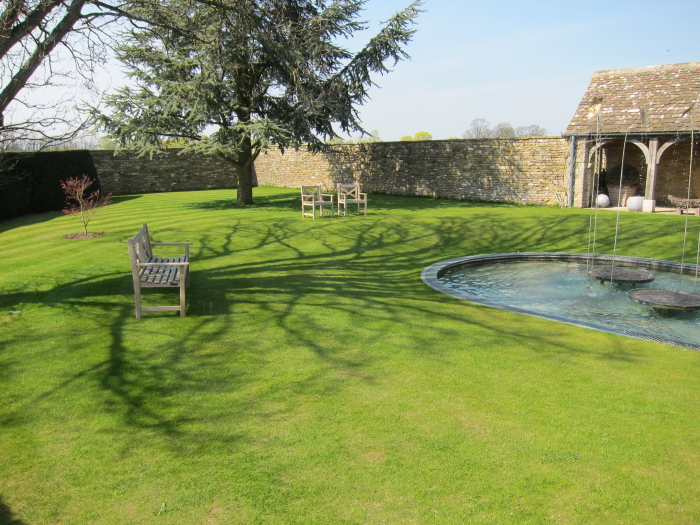

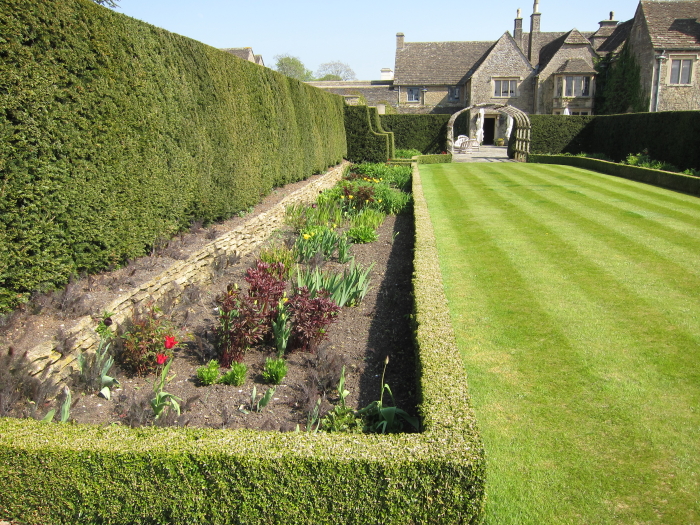
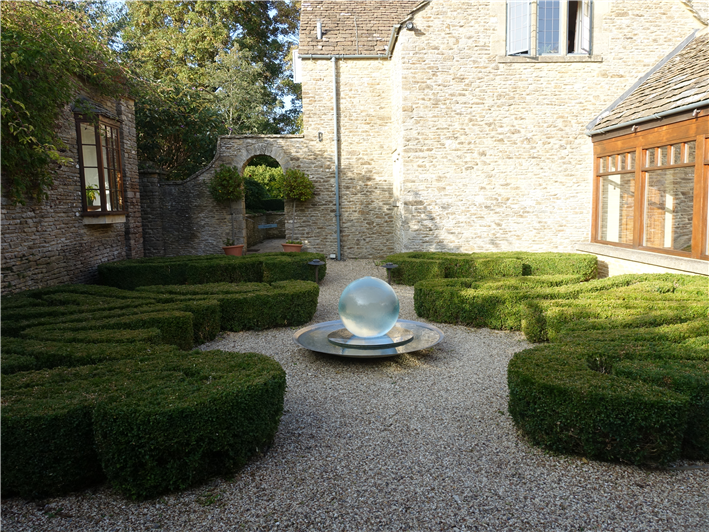
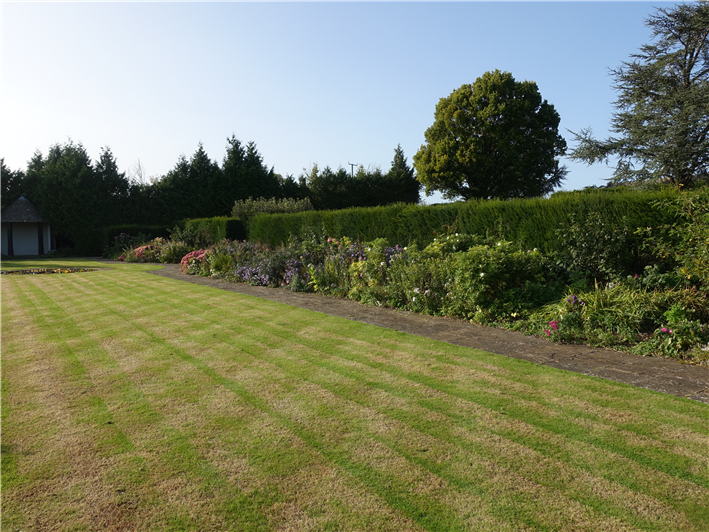

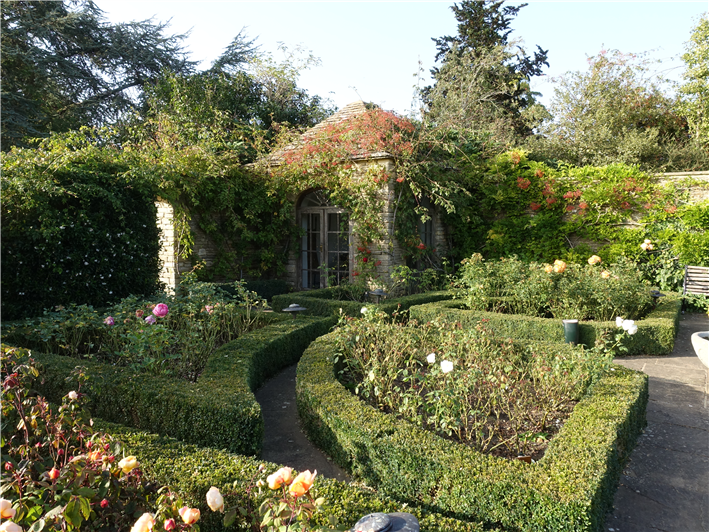
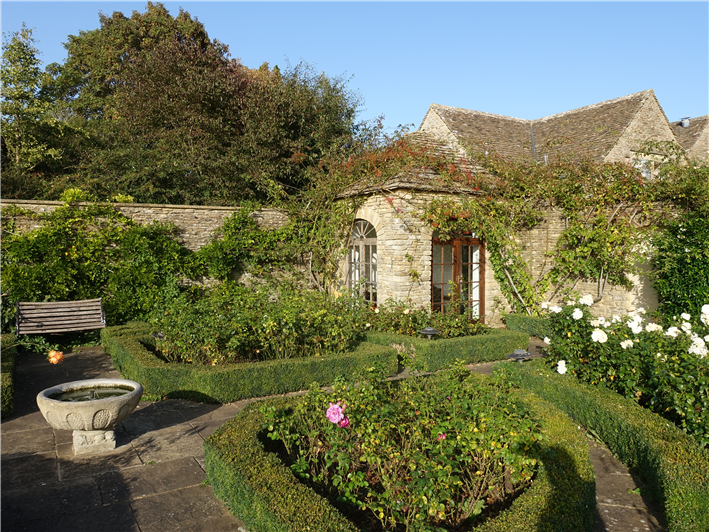
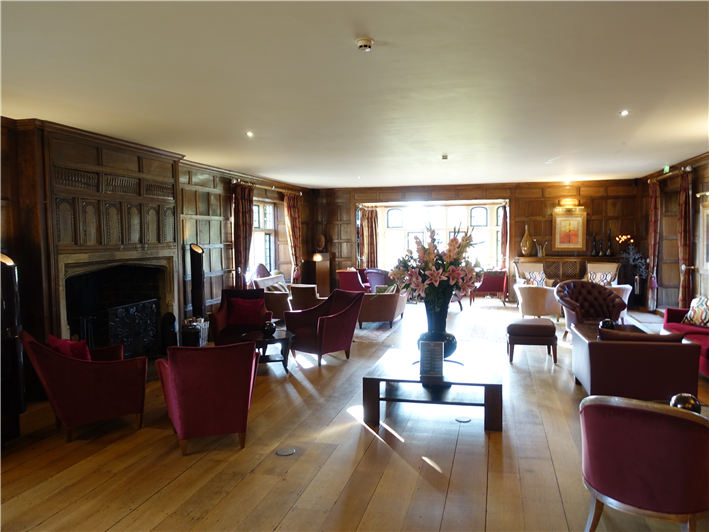
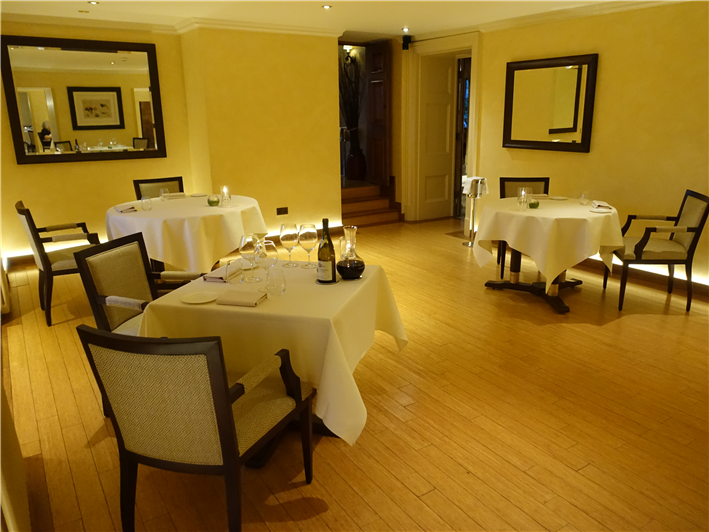

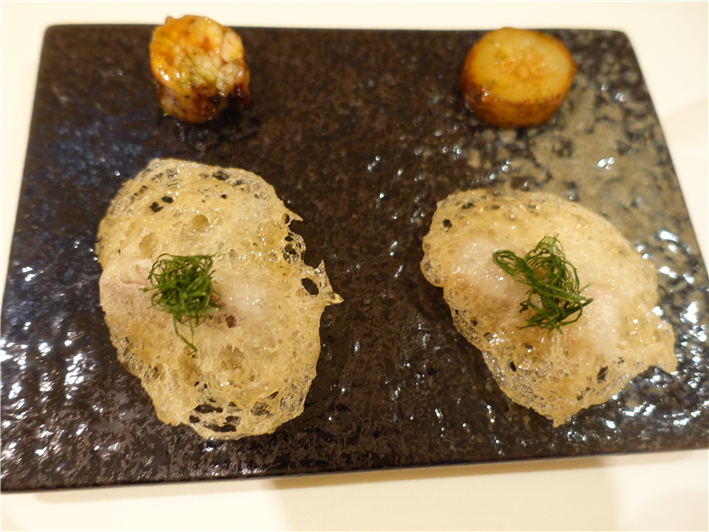
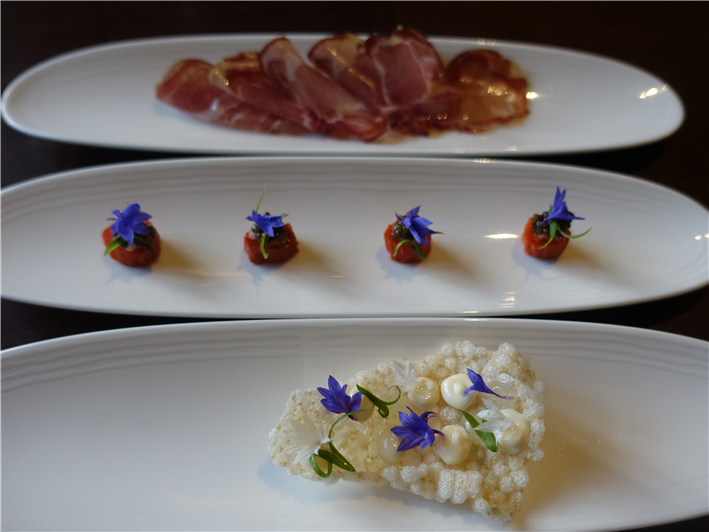


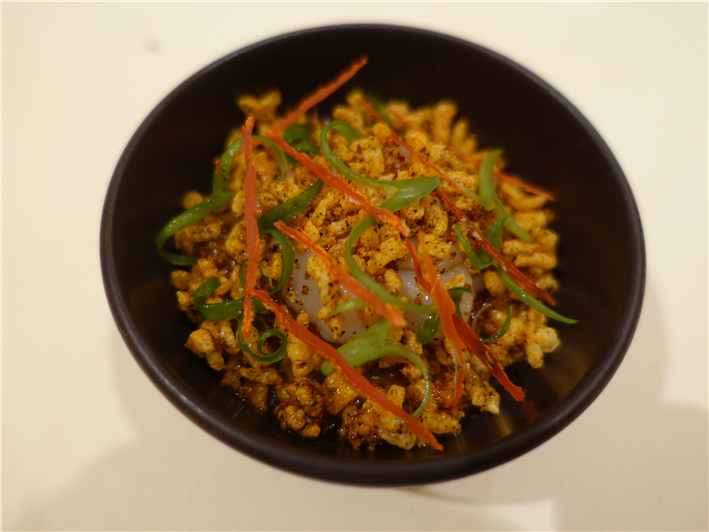
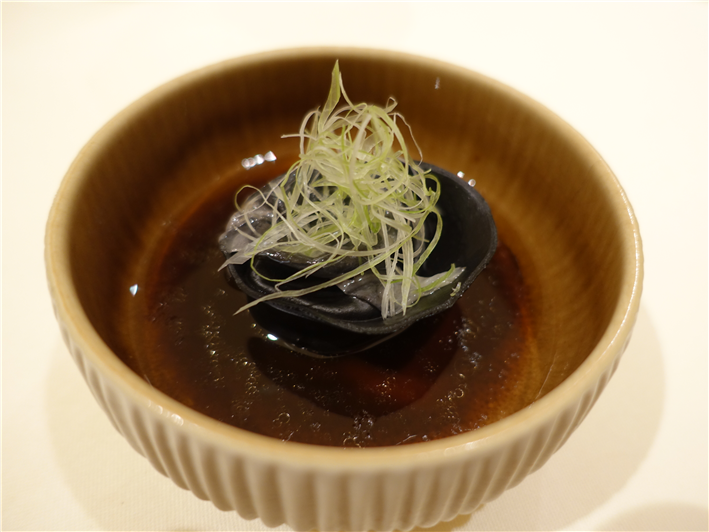


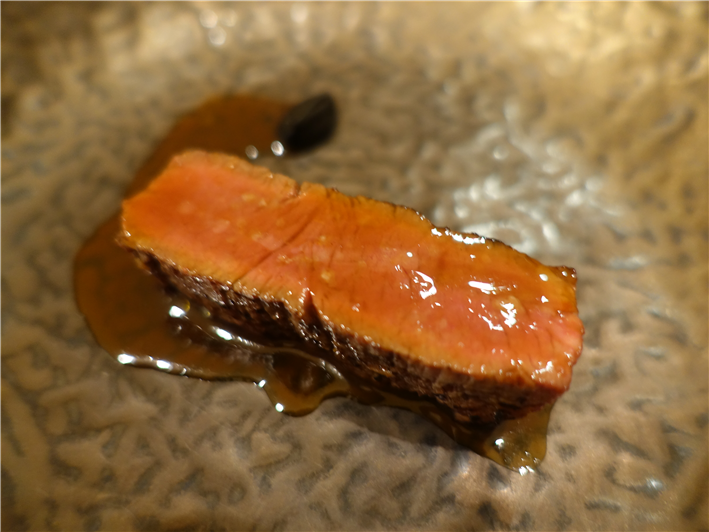
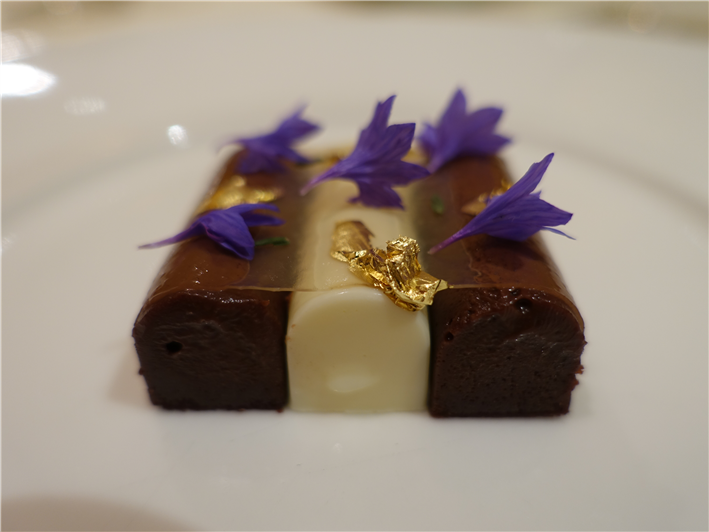
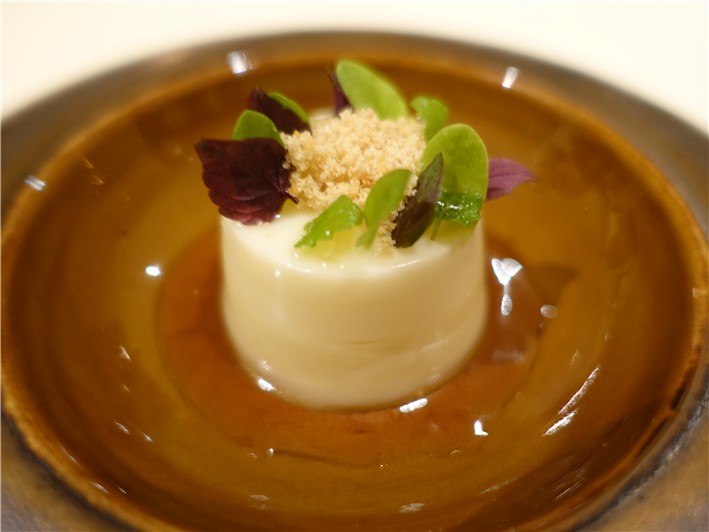
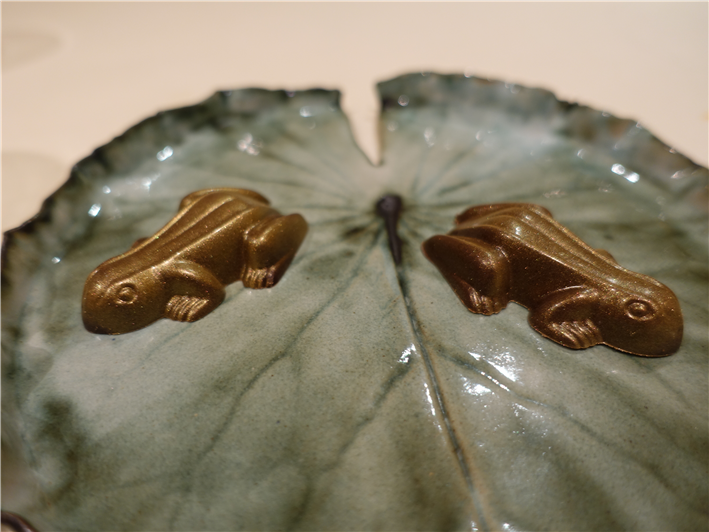
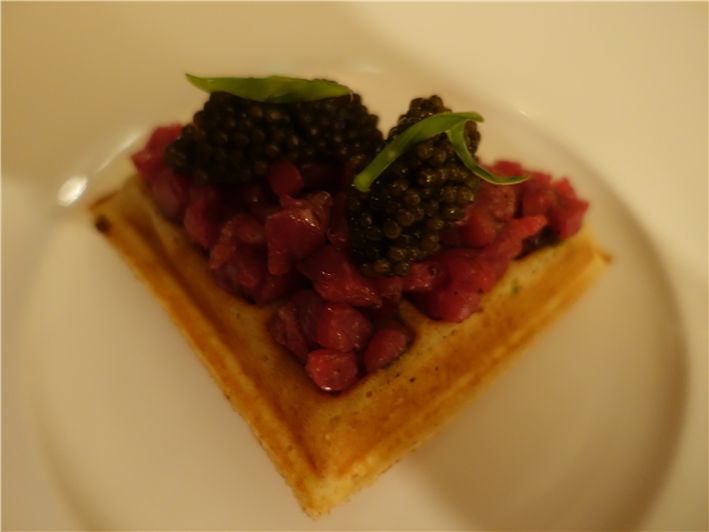
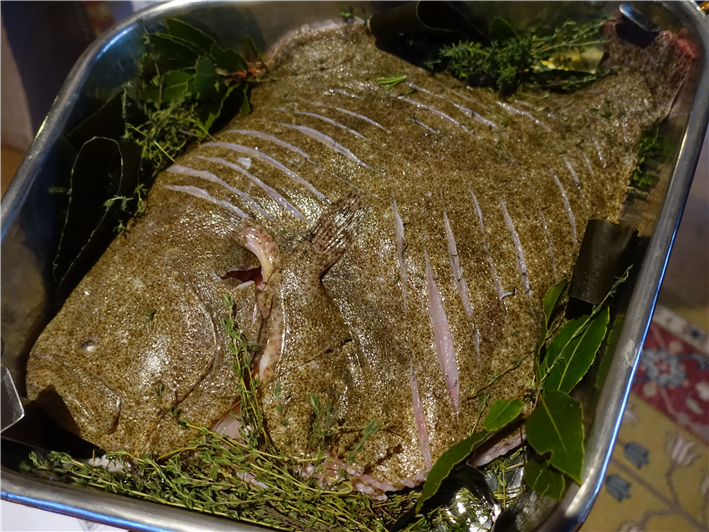

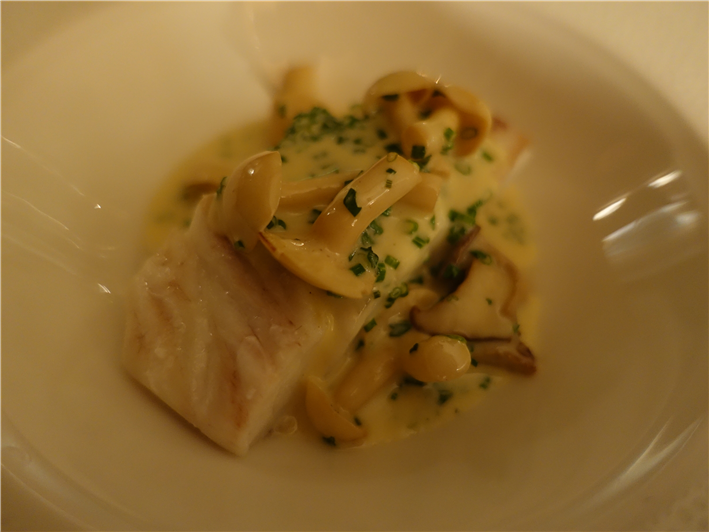
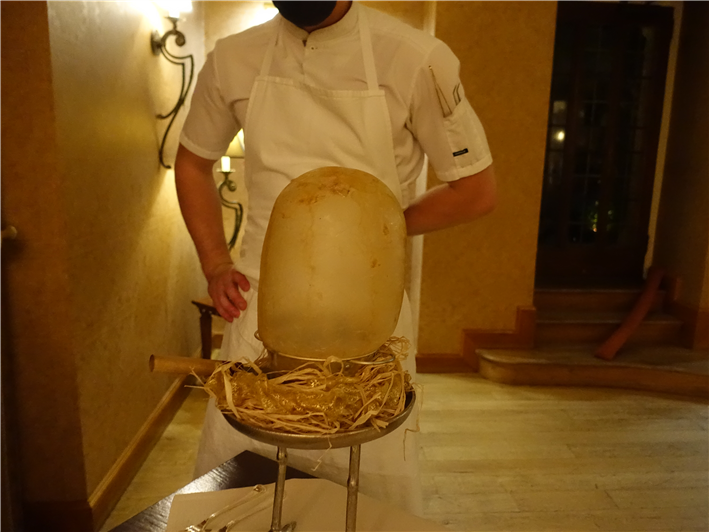

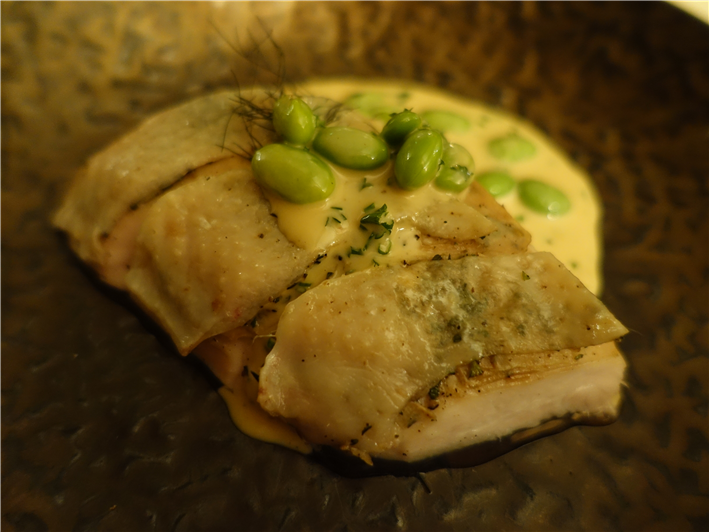
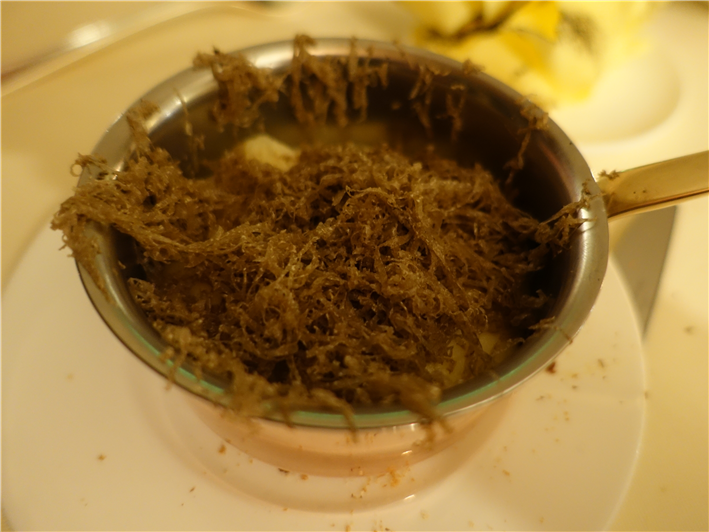
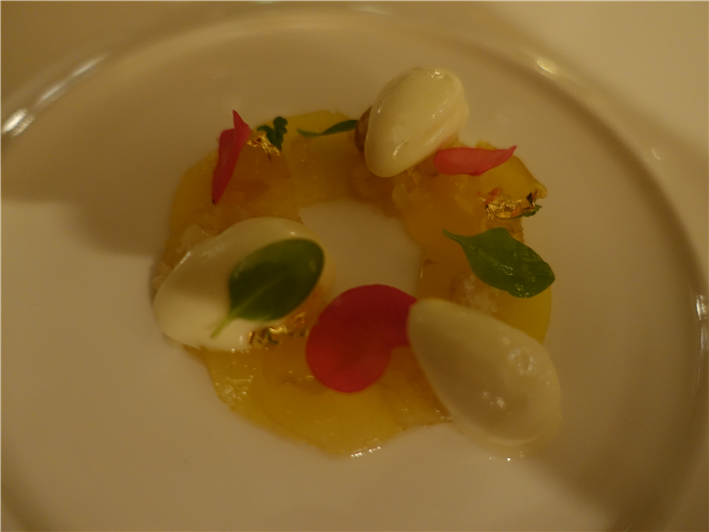
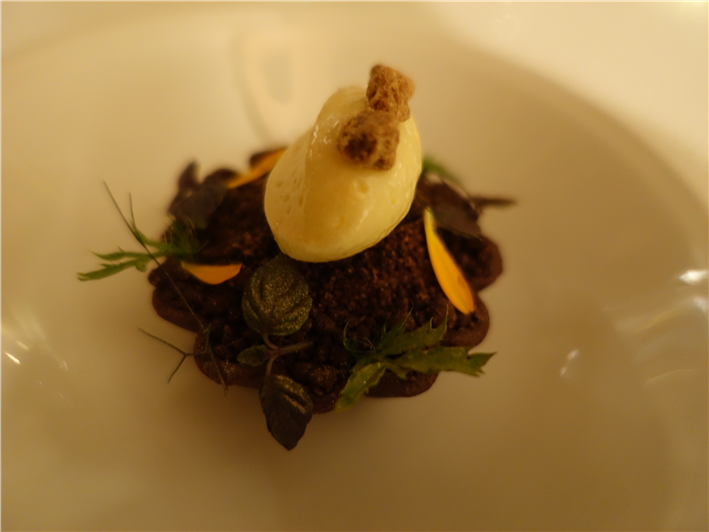
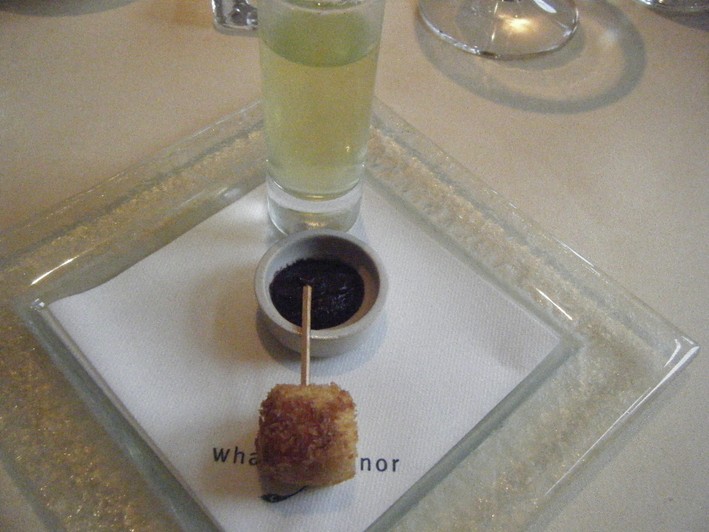

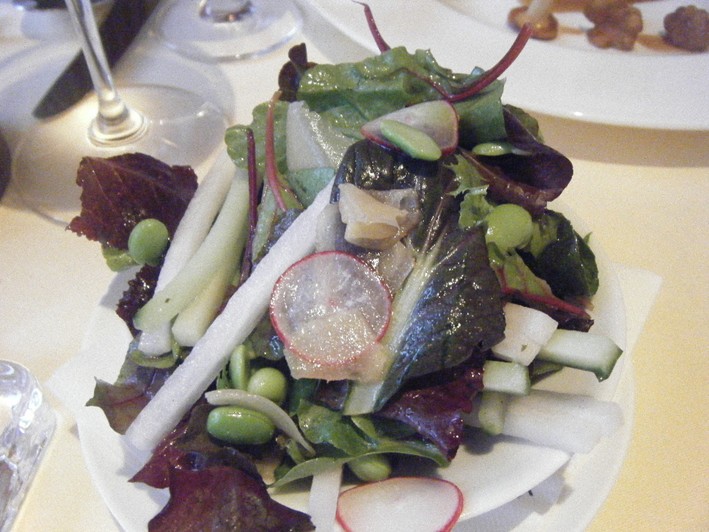
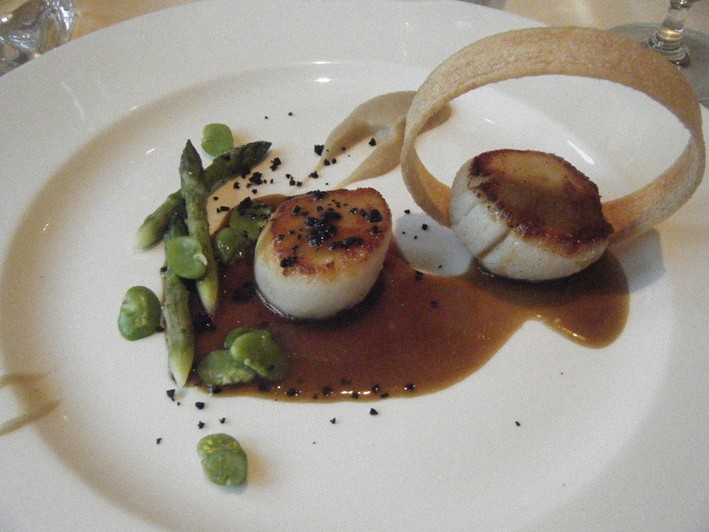
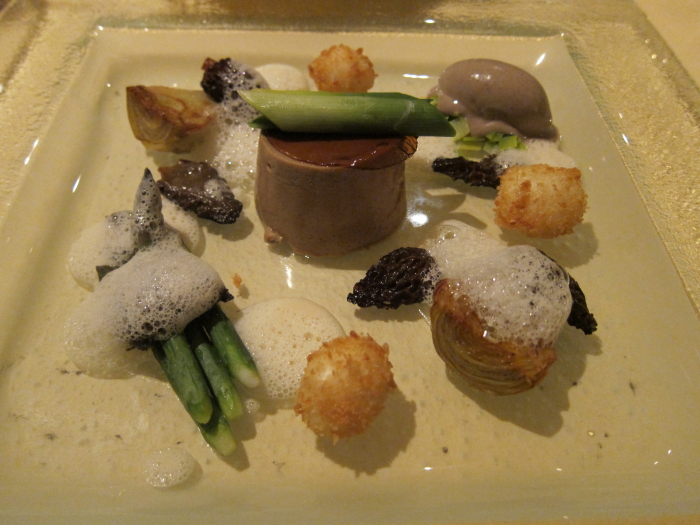
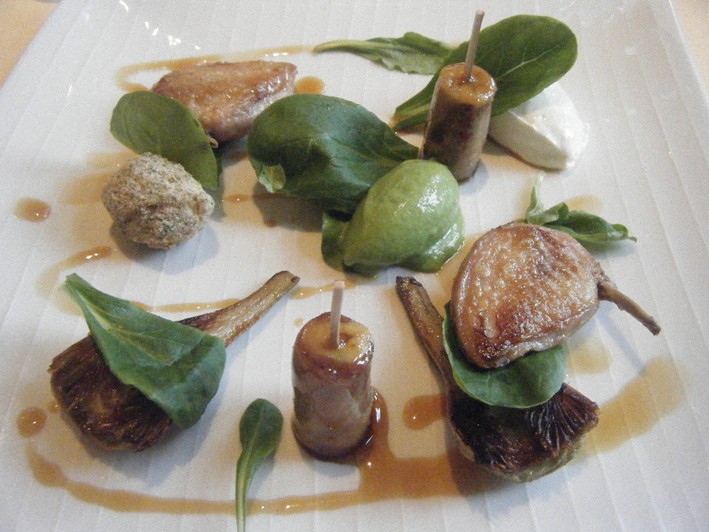
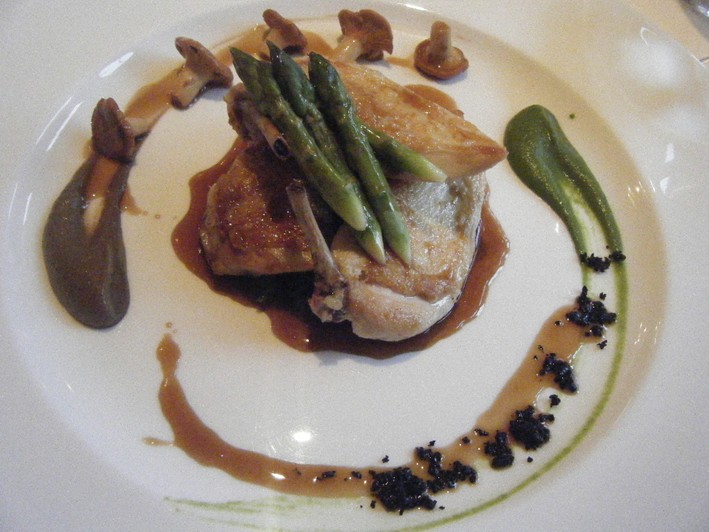
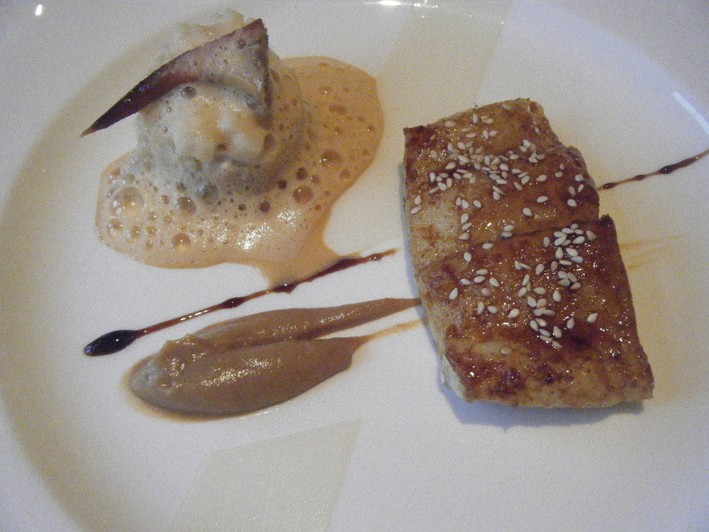
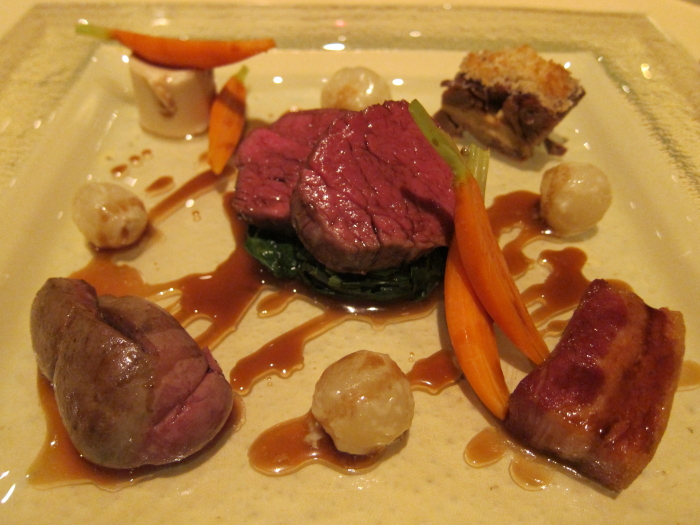

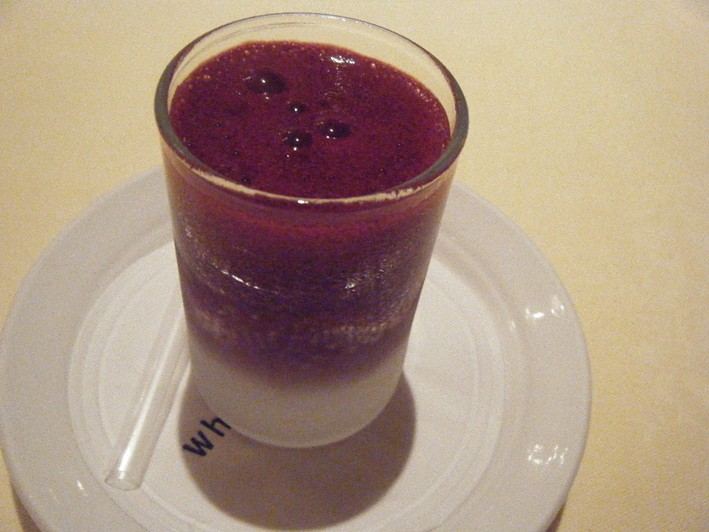
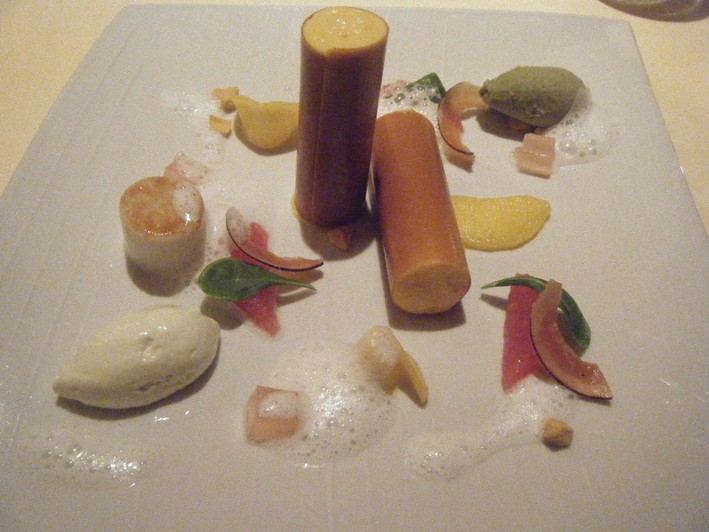
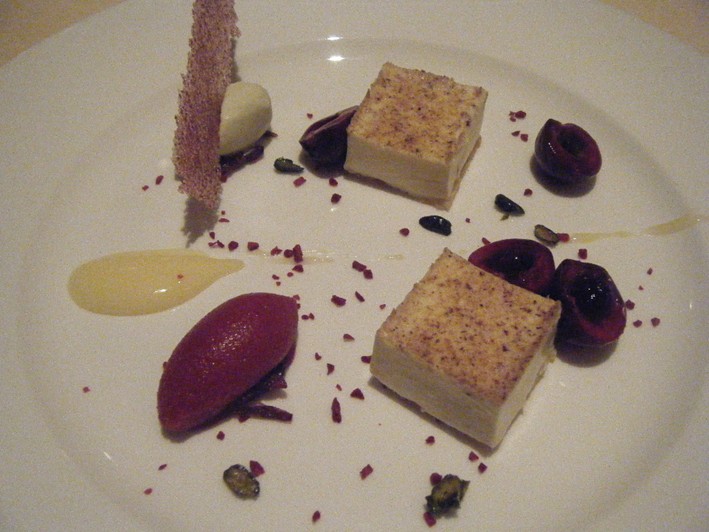
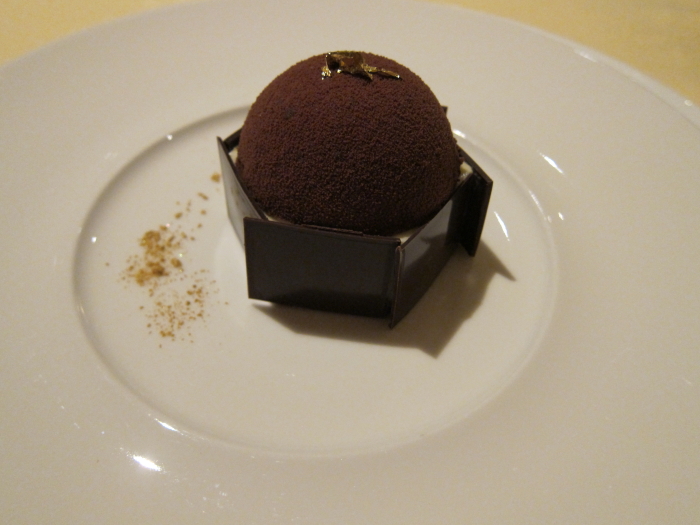
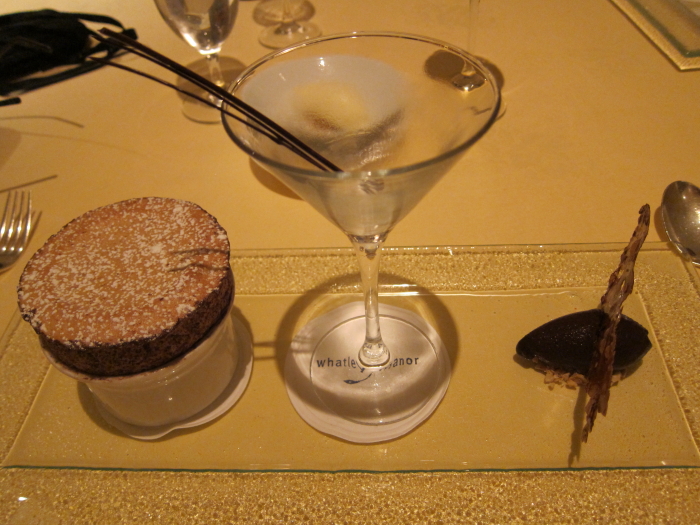
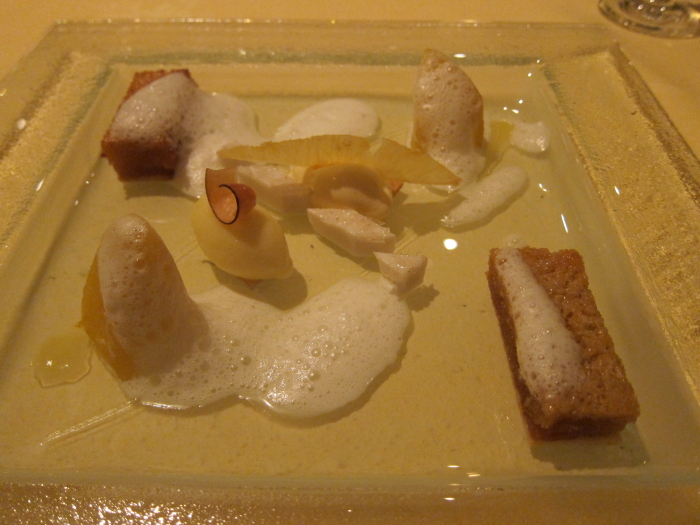

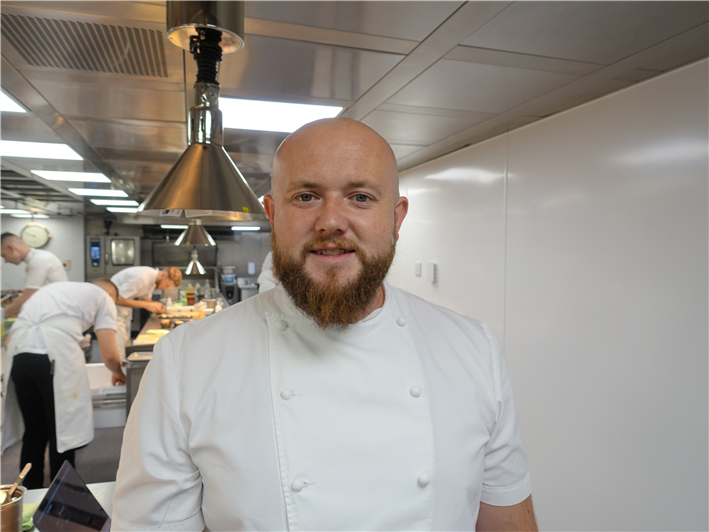


Add a comment
Thank you for submitting your comment, this will be checked and added to the website very soon.
User comments